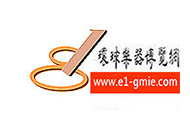维吾尔族的手鼓好听 还玩撒豆子 Nice Uighur tambourine
维吾尔手鼓
手鼓又称达卜。达卜是以其音响命名。达卜:因敲击时发出”达”、”卜”两种音响而得名。手鼓是新疆各族人民庆祝丰收、节日的常用乐器。
达卜早在1400年前的南北朝时就已出现,隋唐时期,达卜随西域歌舞传入内地。1759年以后,达卜列入清代的回部乐。长期以来,达卜广泛流传于民间,成为新疆维吾尔、乌兹别克、塔吉克等少数民族的传统乐器。新疆手鼓
在长期的发展中,各民族的达卜形制略有不同,各具特色,音色丰富,广泛用于器乐合奏和民间歌舞伴奏。
维吾尔族人民非常喜爱达卜,男女老少都会演奏。在维吾尔族各种形式的器乐合奏和歌舞伴奏中,它都是不可缺少的重要乐器,经常作为领奏乐器使用,并起着协调乐队高、中、低音和统一节奏的指挥作用,除可合奏或伴奏外,还能进行独奏。
达卜音色清脆响亮,声音力度变化幅度较大,演奏技巧灵活多变,可以起到烘托各种不同乐曲情节气氛的作用。
手鼓造型可爱,颜色热烈,能产生欢快的气氛。
Uyghur tambourine
Also known as Bu tambourine. It is named after its acoustics. Da: because of percussion, “Da” and “bu” are named after two kinds of acoustics. Tambourine is commonly used instruments of people of all ethnic groups in Xinjiang, to celebrate the harvest festival.
As early as 1400 years ago, the northern and Southern Dynasties have appeared, Sui and Tang Dynasties, with the Western song and dance into the mainland. After 1759, Ji was included in the Qing Dynasty’s music. For a long time, Arghandab widely spread in the folk, Xinjiang Uygur, Uzbek and Tajik become minority traditional musical instruments. Xinjiang tambourine
In the long period of development, the ethnic minorities have different shapes, distinctive features and rich colors. They are widely used in instrumental music ensembles and folk song and dance accompaniment.
The Uygur people love it very much. Both men and women play it. In the Uygur various forms of instrumental ensemble and dance, it is an important instrument indispensable, is often used as a lead instrument, and plays a coordinating band, bass and rhythm of the unified command, in addition to the ensemble or solo accompaniment, but also.
Its tone is loud and clear, the intensity of sound varies greatly, and its playing technique is flexible and changeable. It can play the role of showing various kinds of music, plot and atmosphere.
Tambourine cute, warm color, can produce a cheerful atmosphere
视频来源网络 !如有侵权 ,请联系删除 论点和本频道无关
未经允许不得转载:環球樂器博览网 » 维吾尔族乐队 手鼓好听 还玩撒豆子………Nice Uighur tambourine
 環球樂器博览网
環球樂器博览网
评论前必须登录!
登陆 注册